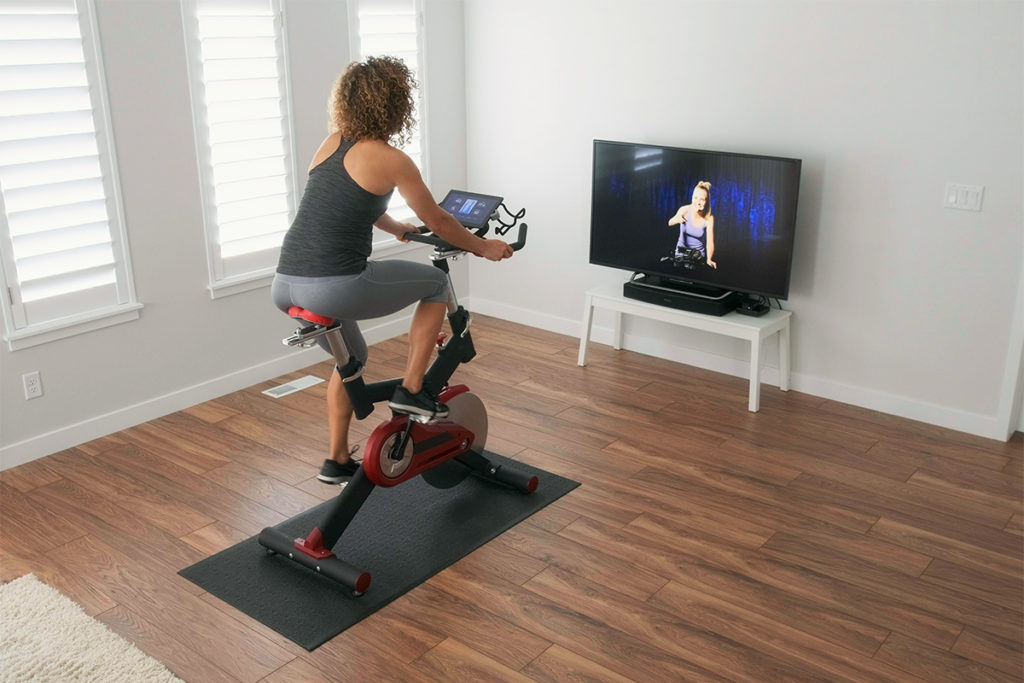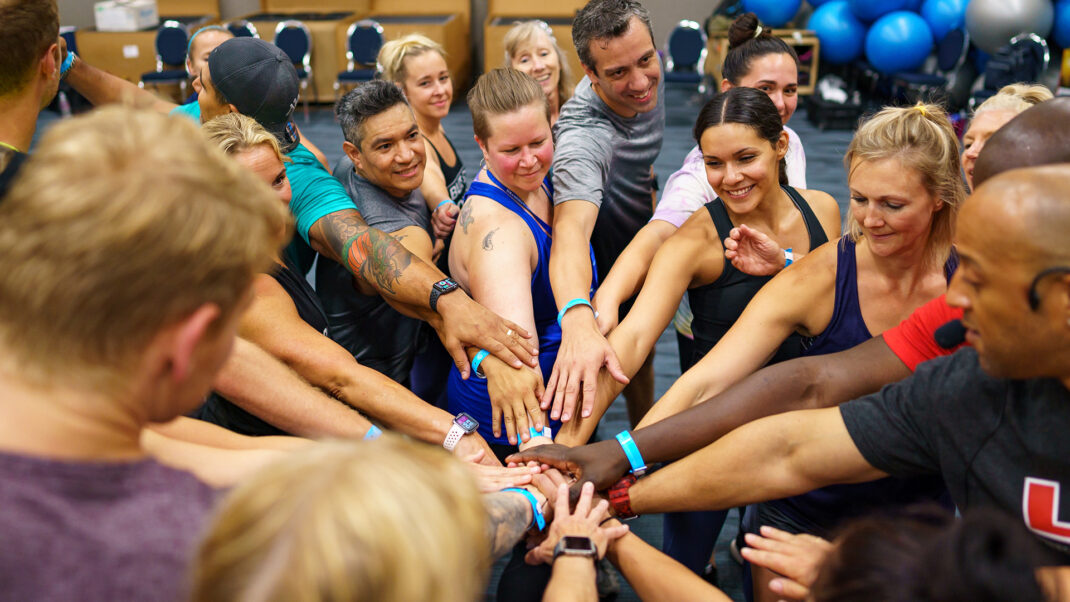Virtual Team Meetings That Inspire and Motivate
Take staff connections to a new level.

Overseeing a large team this past year has helped me realize that making meetings virtual is a tool rather than a tragedy. While it has been a learning process for all of us, going virtual has also helped everyone stay in sync by connecting face-to-face, no matter where we are or what’s preventing us from being together.
Since the start of COVID-19, the virtual meeting space has become competitive, and by the time you read this article, there may be a few new options. You can identify which platform will work best for you, based on your team size, your budget and the length of your meetings.
Note: This article is a deeper-dive follow-up to “Upgrade Your Virtual Communication,” which ran in the October 2020 edition of IDEA Fit Business Success.
Timing and Team Unity
Plan to hold your virtual, in-person or hybrid (in-person and virtual) meetings at least once a month. This will ensure that your team members see each other’s faces and collaborate in real-time. Research conducted by Loughborough University in England revealed that those who attend meetings—as well as the organizer—gain more from being face-to-face with their peers than they do when using other methods of communication (Exhibit City News 2015). Face-to-face meetings promote fresh ways of thinking, team unity, employee investment and engagement, and overall job enjoyment. Even if you’ve scheduled an in-person meeting, include the option for your team to join virtually. This is a great way to include those who cannot attend because of work travel, lack of childcare, other work requirements, etc.
Organization and Planning
When organizing a meeting, follow these steps to ensure that your staff is aware of, has time to plan for and knows what to expect of your time together:
- Give your team plenty of notice, and make the link or virtual meeting invitation easily accessible. Schedule meetings at least 2 weeks ahead of time. If you can, schedule monthly meetings 3–6 months out, so everyone has them on their calendars.
- If possible, maintain a consistent link and password. Encourage your team to save these on their personal devices. This way, if they find themselves trying to log in at the last minute and not finding the direct link you sent, they still have what they need.
- Refer to the date and time of the meeting in other communications, to emphasize its importance. For example, if you send a monthly newsletter, include a meeting reminder.
- In the meeting invitation (and any other references), outline what to expect, what team members should bring and what they should be prepared to do or discuss.
- Let your team members know that you value their time and presence, and reassure them that you will start and end the meeting on time (then keep your word).
Bear in mind that the measure of a meeting’s success is not just the number of participants but also the amount of participation, connection and collaboration. As the meeting coordinator, you need to track staff attendance and contributions. Perhaps you can delegate these tasks to a team member who consistently attends—and provide additional compensation or a small gift card in return.
See also: Leading a Team in a Hybrid Fitness World
Virtual-Meeting Best Practices
Following are some best practices for virtual meetings:
As the meeting organizer, begin at least 5 minutes early to ensure everything is ready and working as your team logs in.
- Mute yourself when others are talking.
- Do not forget to hit record! More on this later.
- At the beginning of the meeting, review these two practices:
-
- Muting. Give your team the chance to chat as they come in, but then ask them to mute themselves for the rest of the meeting to cut down on background noise and make it a pleasant experience for everyone.
- Using the chatbox. If you’re going to open the floor for questions, save time and your participants’ memory skills by encouraging people to use the chatbox to ask a question. They can send a question to you privately or to everyone. Remind them that you’ll do your best to get to each question and, if you miss any, you’ll follow up. Answer questions in the order received, and read them aloud if you think they’re meant for the whole team.
Value-Added Meetings
It’s important that, as the leader, you take meetings seriously. Your team members are smart enough to know when you’re not prepared and can sense when their time is being wasted. Just having a regular meeting is not enough. To see value in attending and participating, they need to understand the purpose.
Here are some ways to prepare for a valuable and enjoyable meeting:
- Record the meeting on the virtual platform and rewatch as often as possible. This is a great way to see how you behave as a meeting leader. Pay attention and ask yourself these questions:
- How often did I allow my team to speak?
- How well did I listen?
- Who didn’t get the opportunity to speak, or who wasn’t engaged, and why?
- Provide the chance to ask questions (with guidelines). When you open the floor after an announcement, take a moment to request that all questions be broad and team-focused. Announce that specific questions will be addressed individually, after the meeting.
- When responding to questions, slow down. Take the time to thoughtfully clarify your response.
- Use lists and bullet points as references to keep yourself on task. People process things best with concise, clear-cut language.
- Be aware of your lighting and sound. Make sure your internet connection is stable and your face is well-lit (natural light is best). Wear headphones with a microphone to improve sound quality, reduce background noise and avoid echoing.
See also: How to Grow Your Group Exercise Team
Connection Is Key
Providing your team with the ability to “see” each other as often as possible through a valuable team meeting will promote connection and trust. Use these ideas to have fun and foster a connection from a distance. Reap the rewards of a team who knows and supports each other through thick and thin.
References
Exhibit City News. 2015. Research proves value of face-to-face communication. Accessed Dec. 6, 2020: exhibitcitynews.com/research-proves-value-of-face-to-face-communication/.
Staci Alden
Staci Alden is committed to helping group fitness managers elevate their programs, instructors, and leadership skills through her writing, presentations, and YouTube channel. For more than a decade, she has overseen a team of over 100 private Pilates and group fitness instructors at a luxury health club in Seattle, Washington. Staci also is certified as a master Balanced Body® barre and MOTR® instructor.







